How to DJ without headphones
Can you DJ without using headphones?
So you’re wondering if it’s possible to DJ without using headphones?
Let’s start off by saying yes of course it’s possible but is it a good idea?
After all it’s not often you see DJs without headphones so why should you do it?
Let’s explore just how to DJ without headphones and if it’s the right thing for you.
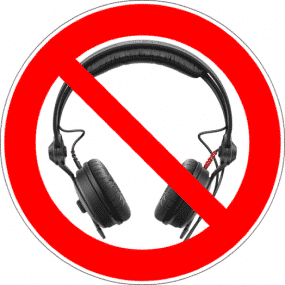
So let’s jump right in and understand why it is that DJ use headphones in the first place.
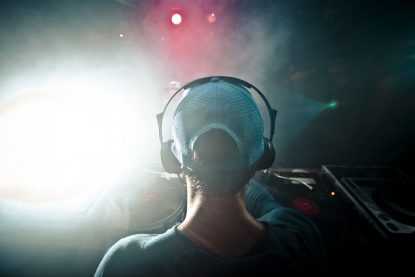 It’s important to understand this to see whether or not their primary use is something you really want to stick with, or if you think you can live without it.
It’s important to understand this to see whether or not their primary use is something you really want to stick with, or if you think you can live without it.
There’s one simple thing to remember with DJing
DJing is never about the sounds that’s playing, but about the sound that’s coming next
This is a simplified perspective of DJing but it rings true. It’s all about getting the next sound ready to be introduced in to what the crowd can hear. Whether that’s the next track, a looped sample, an acapella or some other soundscapes to mix together.
Your job is to cue up those sounds and transition them in to your mix in creative ways.
Headphones play a vital role in making this possible.
They allow you to clearly hear the sounds from all the other channels not currently in the mix, so you can cue them up perfectly, beat match manually and check effects sounds, filters and EQ levels.
Once upon a time vinyl records came in various qualities and notable differences in volume too, so it was important to always cue up tracks, hear where the first beat was and make sure the levels all sounded good.
So there was a clear need for headphones in this scenario. In fact beat-matching without them is virtually impossible and not recommended! You needed to hear the track to know if the sounds were beat matched perfectly.
Digital music has changed things immensely for a number of reasons. here’s a few of them
- Sounds are automatically “normalised” so the volume is consistent
- Sounds are visualised in waveform so you can visibly see the sounds
- Frequencies are indicated on screen by different colours so you can see kick drums, vocals, melodies, etc
- Beats Per Minute are detected automatically and displayed on screen
- Deviation from perfect sync is visualised allowing for easy corrections
- Effects can be pre-programmed and easily refined
- It’s possible to automatically sync beats (more on whether you should do this later)
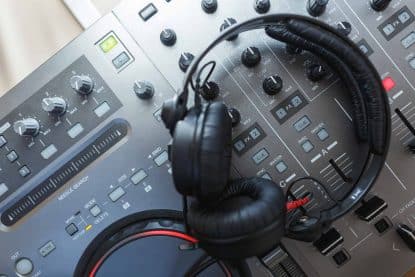 It’s clear to see that digital music is very different to analog music.The indicators, visual elements and information available to you negate some of the requirements that made using headphones to DJ such a vital tool.
It’s clear to see that digital music is very different to analog music.The indicators, visual elements and information available to you negate some of the requirements that made using headphones to DJ such a vital tool.
Mentally speaking it’s very reassuring to be able to hear the sounds you’re about to bring in to the mix. To understand their impact on the sounds already playing and to make sure they’re the exact sounds you want right now.
DJing is a very audible experience so it makes sense to build the confidence in your mix by using headphones to hear everything you need.
So if this is the case, why would you not want to use headphones? Well lets explore why it may be a great idea for you to DJ without headphones.
So if using headphones is an integral part of DJing and an important tool you can use, why would want to not use headphones to DJ?
Well there’s actually a number of reasons and situations where not using headphones with modern DJ equipment could be useful, even beneficial. So let’s explore them.
More freedom to move and dance
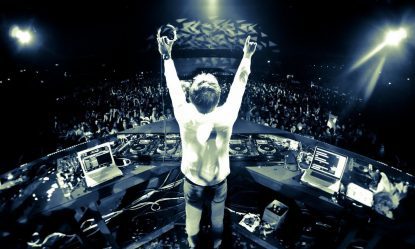 Headphones are attached to the DJ mixer by a cable. Usually only 3 or so metres long. This restricts your movement behind the decks and, depending on where you’re DJing, this could hamper your performance.
Headphones are attached to the DJ mixer by a cable. Usually only 3 or so metres long. This restricts your movement behind the decks and, depending on where you’re DJing, this could hamper your performance.
Modern DJing is all about interacting with the crowd as much as it is about getting creative. Part of this can often be hyping the crowd up and dancing along with them. How are you going to do that if you’re tethered to your mixer the whole time?
No headphones means total freedom. There’s no need to worry about yanking the cable out of the mixer as you dance. No worries about taking your headphones on and off just to dance and engage with the crowd.
Less points of failure
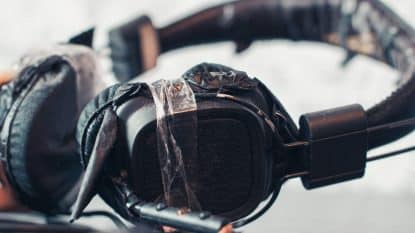 Headphones are a tech device just like any other and can fail just like any other. If you DJ without headphones then it’s one less technical device to worry about. Now you don’t need to worry about speakers failing, cables breaking or mixer settings either.
Headphones are a tech device just like any other and can fail just like any other. If you DJ without headphones then it’s one less technical device to worry about. Now you don’t need to worry about speakers failing, cables breaking or mixer settings either.
You can concentrate on your mix instead. One less thing to worry about. Sounds great right!?
Focus on the visual indications
With the removal of headphones from your DJ setup you can now focus 100% on the visual indications that your tracks are in sync and mixing perfectly. Modern DJing offers a myriad of ways to know if your music is in sync and working harmoniously. It can be argued that there’s potentially too many signals now which can confuse and distract you.
The disconnect between what you visually see and what you’re hearing can also cause issues some times. Your eyes telling you one thing while your ears are telling you another. Navigating the two can be difficult and potentially lead to DJ mistakes being made. So if you can eliminate the audio cues from the equation it may actually improve your DJ skills.
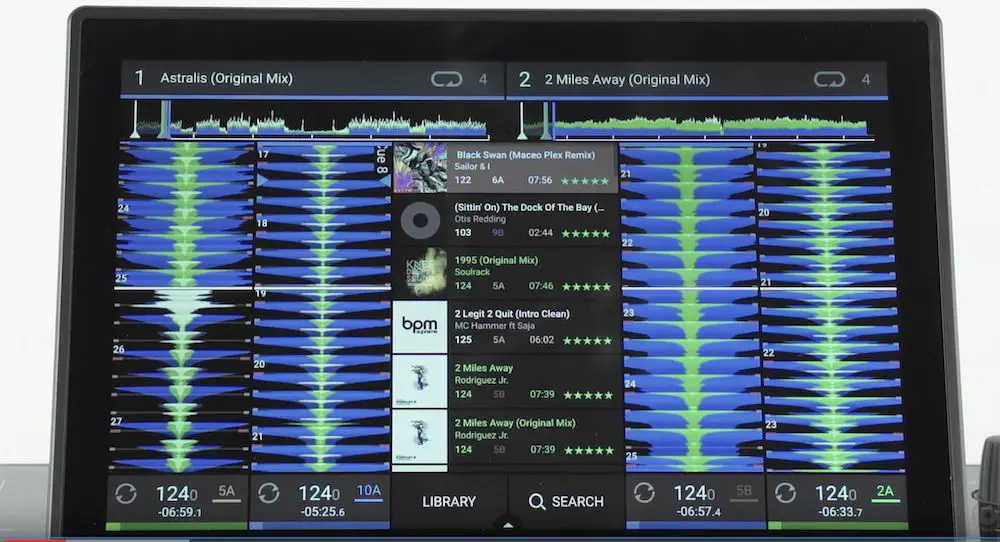
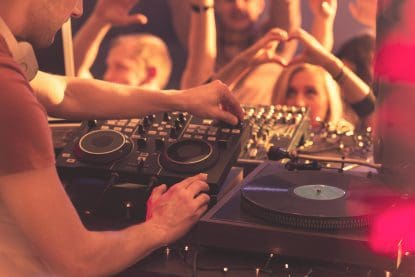 Ask me this 15 years ago and I may have said yes. But having done this myself for the last year or so I would say it’s a lot less hard than it used to be.
Ask me this 15 years ago and I may have said yes. But having done this myself for the last year or so I would say it’s a lot less hard than it used to be.
For a new DJ growing up you could start out with no headphones and find it works really well for you. While us old school DJs used to having audio cues to help us beat match and mix might struggle to adjust to life without DJ headphones.
As mentioned in the previous chapter, reducing the number of senses needed to conduct a mix might actually help you, so you may find it easier to mix without headphones.
My experience is a little harder to pinpoint. I can appreciate all the extra visual cues on my DJ software that help me beat match, but I would feel less confident if I couldn’t hear the sounds before they are transitioned in to my mix.
I personally think it’s harder without headphones but that’s because I like that extra indicator and the confidence it gives me. You may no need that. So you may find it easier.
There’s no right or wrong here, just personal preference.
The biggest difference you will have is exactly what techniques you’ll need to use to pull off great mixes without headphones and just how well you’ll need to know your set.
So let’s explore those in detail so you can make the most of DJing without headphones.
There are two main tools you’ll need to get very familiar with in order to DJ without headphones. Without knowledge and experience of these you’re going to struggle to mix.
Both of these tools are vital to understanding the sounds you’re about to play, how they’re looping, when they will end and how to effectively mix without the need for headphones.
Cue Points
Finding the part of the track you want to work with is vitally important when DJing. You may not want to always start from the beginning and if you’re looping samples from tracks it’s highly likely there are specific sections of the track you’ll want to jump to. Cue points, also known as Hot Points or Cue Markers are parts of the track you’ve predetermined as useful for your mixes.
Most modern Dj controllers or decks have performance pads or cue pads that can be used to instantly jump to these cue points. You can even mark some as loops which will automatically start looping as soon as you jump to them.

If you’re DJing without headphones then being able to jump to these cue points and knowing what sounds are at those points is very important. Without this you’re going to find it virtually impossible to do anything creative.
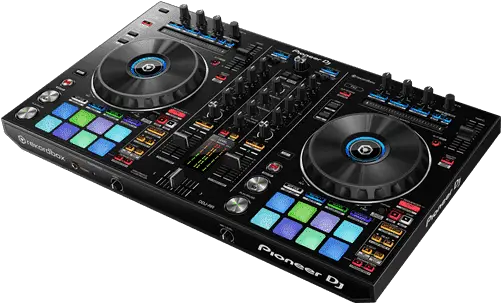
I highly recommend you listen to the tracks you want in your set list before the gig, making sure you add all your cue points to the most interesting and creative parts of the track. It could be drum loops, percussion loops, loopable melodies or interesting sounds. Or it could just be the best place on the track to start from.
Not only do you need to set all these on all of the tracks and samples you want to use, but you’ll need to remember what these sound like, since you can’t listen through headphones to double check. This is where the waveforms come in handy.
Waveforms
Most modern DJ software displays the waveform of the music you’re playing in each deck. Every kick drum, high hat, synth, vocal and bassline will be visible in this waveform, often colour coded to better understand what frequencies are in each part of the track.
This gives you a wonderful visual cue of what’s at each of your cue points. A loopable kick drum or percussion sequence will look very different to that of vocals or breakdowns. So you can use this visual information to know exactly what types of sounds are in the track.

You’ll also be able to tell if your tracks are in sync as the waveforms can be displayed side by side. The drum kicks should match up perfectly, the loops should bounce back to the start and replay your sample all with a very useful visual cue.
Again without this tool mixing without headphones is going to be impossible as you need the visual representations to understand where you are.
You’ll often see waveforms used in the progress of a track, so you’ll know how far you are from the end or how close you are to the start of a breakdown or start of the next bar of beats.

I’ve been able to successfully mix with 4 decks, using a mixture of house music tracks, samples and percussion loops, all without DJ headphones. In fact keeping up with all of these channels at once is more complex using headphones than using the visual representations, so you absolutely can Dj without headphones thanks to cue points and waveforms!
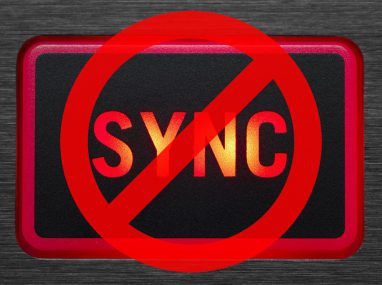 The debate rages on with this one especially as more DJs move away from traditional beatmatching in favour of auto-syncing and getting super creative with their sets.
The debate rages on with this one especially as more DJs move away from traditional beatmatching in favour of auto-syncing and getting super creative with their sets.
Interestingly there’s still an argument against needing to auto-sync your tracks together, matching their BPMs by computer, as DJing without headphones still gives you lots of visual cues by which to know if your tracks are in sync.
As mentioned in the previous chapter, the waveforms often show kick drums or other sounds alongside each other so you’ll be able to see if they are in sync. There’s also visual indicators showing what percentage ahead or behind they might be.
You’ll also be able to see the precise BPM of each track, so assuming the start perfectly on the beat then you can easily adjust your tempo slider to match the BPMs.
Quantised snap
All the best DJ software has a quantise feature, meaning when you press play or jump to a cue point suddenly it will sync it perfectly, snapping to the beat of the other playing tracks, keeping everything nicely sync-ed. This works regardless of you using the auto-sync feature of software.
So if you push the button a millisecond too early or too late, the software will adjust the actual launch moment to keep everything nicely in sync. This feature is a must especially if you’re working with more than 2 decks.
Here’s a great video on Quantised snap for Traktor. Most DJ software has the same feature and works in the same way.
Why I think sync is best for DJing with no headphones
Personally i find all the visual elements so useful that it’s very easy to beat-match manually. Which begs the question “why bother doing it manually?” If you’re using up valuable time to get to the exact same result the software can do for you then by all means push that sync button!
Also beat-matching takes time and resources away from you being creative in other ways. Imagine trying to keep 4 decks perfectly beat-matched manually compared to having them all sync-ed automatically. What could you do with that time? How much more creative could you be? Loading up the next awesome sample and adding that to your mix without delay.
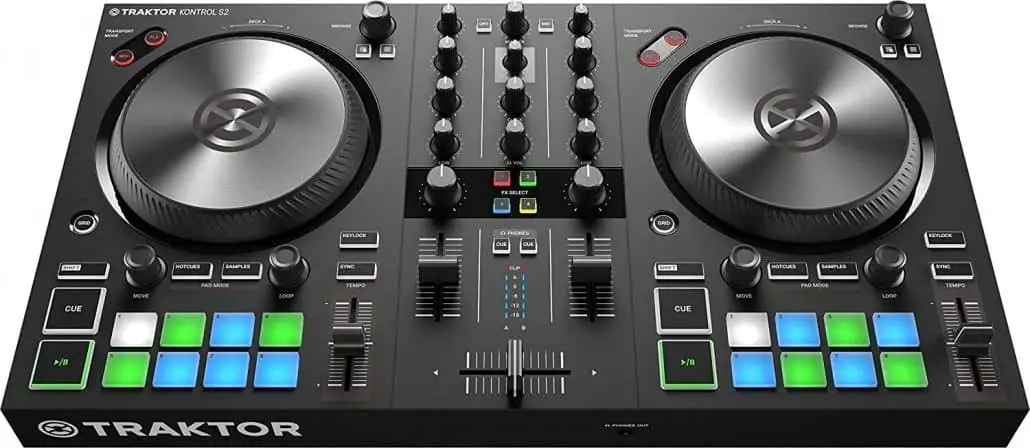
I recently performed a 1 hour seamless mix, bringing in new tracks within seconds of the last ione being transitioned out. Layering our exclusive percussion loops over the top on 3rd and 4th decks. This mix was one of my most creative, something I’d planned meticulously for weeks and had some of the most fun executing. This would not have been as creative and exciting to listen to had it not been for the sync button.
The visual information in my DJ software proved much more useful to the overall mix than headphones did and while I fully confess I used headphones during the mix, they played a secondary role in the collection of tools I used to pull it off.
Have a listen below for how visual indicators and good preparation can produce awesome seamless mixes. I’m confident I could have achieved this without headphones.
While visual elements are definitely a very important part of live mixing, there are other things you can do that will have a positive impact on how easily you can DJ without headphones.
Do these extra techniques and you ‘ll increase your chances of pulling off amazing mixes without headphones in a much more confident and creative way.
Understanding each track from start to finish
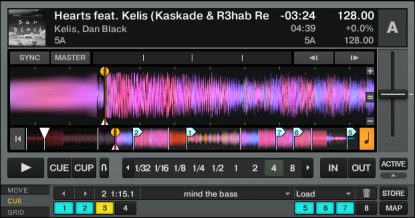 This goes for any set list but it’s especially true when you’re doing away with headphones. You’ll want to listen to each track of your set list as many times as you can.
This goes for any set list but it’s especially true when you’re doing away with headphones. You’ll want to listen to each track of your set list as many times as you can.
Understanding it’s exact structure, when important sounds enter the track and when the leave too.
If there are areas you want to loop or sample then it’s important you set your cue points and play around with them. Find out what loops sound best and how they work with your other tracks too.
The more you can understand the sounds within your tracks the better judgements you’ll be able to make when performing your mix to a live audience.
Sticking to the same set list order
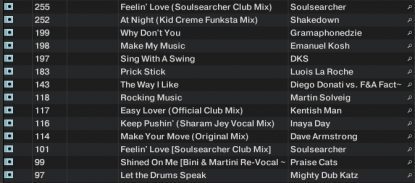 When curating a set list you’ll find that’ll certain tracks work well together and other combinations don’t. When the energy builds from one to another, or the key changes in wonderfully creative ways. When the breakdown of one track sounds amazing alongside the build up of other tracks, that’s when you know you have something special.
When curating a set list you’ll find that’ll certain tracks work well together and other combinations don’t. When the energy builds from one to another, or the key changes in wonderfully creative ways. When the breakdown of one track sounds amazing alongside the build up of other tracks, that’s when you know you have something special.
This is the art of creating the perfect set list. Something we’ve written about in a previous article. It’s something you’ll want to put together long before the even you’re DJing at.
Once you’ve found the order you want to play your tracks in, don’t change this plan during your gig! Without headphones it’ll be tough to know how two different tracks will sound together. That audio preview is something you’ll want to use at home without an audience, to understand how well it works when there is an audience.
Stick to your plan, you’ll then know exactly how each track should sound, flowing in to each other or looped in creative ways as pre-determined.
Rehearsing your mixes before the big gig
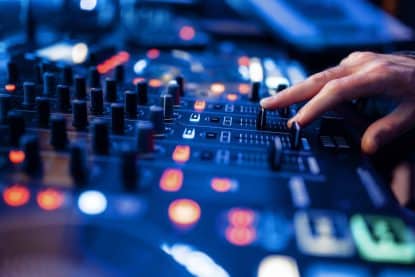
I can’t emphasise enough how important this is to your gig, rehearsing can change everything and give you so much more confidence when you’re playing in front of a crowd.
The DJ mix might be new to your audience but it should be meticulously planned and well executed before the big day.
Don’t let things rely on good fortune on the night. Plan ahead by rehearsing the set a few times, knowing exactly how you’re going to pull it off. This will negate a lot of the need for headphones if you’re playing a well planned set.
This gives you more time to dance, engage with the crowd, hype them up and add those exciting loops and sounds just as you knew you would from all your rehearsals.
It’s true that most DJs still use headphones. Whether it’s for the primary use or just a cool accessory that defines the DJ look. It’s still the most popular method of DJing with confidence. So who exactly is DJing right now without headphones and why?
Steve Angello
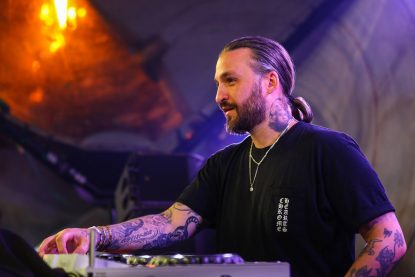 Steve is one of the most famous DJs that doesn’t use headphones. In fact he’s pushed the art of DJing to a level that has made DJing with headphones utterly redundant.
Steve is one of the most famous DJs that doesn’t use headphones. In fact he’s pushed the art of DJing to a level that has made DJing with headphones utterly redundant.
Known for his epically long sets and crazy DJ setups with up to 7 decks all playing at once, sets like these don’t lend themselves to headphone use.
The freedom to work without headphones and just knowing his music inside out is what makes it possible.
If you’ve ever seen Steve Angello DJ you’ll instantly see why headphones are pointless. Known for his flamboyant style, jumping up on the deck table and hyping the crowd. Mixing in multiple samples layered on top of each other. It’s nothing short of mesmerising.
There’s a clear argument here that DJing without headphones can be a much more creative and rewarding experience for DJ and audience alike.
In fact he’s proved so popular some suspect his skills without headphones must mean some fakery is at work with pre-recorded mixes. While he does produce his own remixes and audio samples, he most definitely DJs live.
DJ Zedd
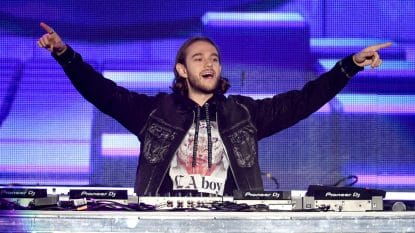 Enjoying a summer long residence in Las Vegas, Zedd has now DJed for years without the use of headphones. He recently tweeted this very fact saying “I know every song I play and it’s key / tempo in and out. Don’t need headphones.” which just proves that if you know your music well, understand music production and how sounds interact with each other, then headphones are of little extra use.
Enjoying a summer long residence in Las Vegas, Zedd has now DJed for years without the use of headphones. He recently tweeted this very fact saying “I know every song I play and it’s key / tempo in and out. Don’t need headphones.” which just proves that if you know your music well, understand music production and how sounds interact with each other, then headphones are of little extra use.
Plus his Vegas residency billing just goes to show that if you put on a great performance without headphones you’ll produce memorable sets that party-goers will remember forever. Something you may struggle to replicate if you’re tethered to the turntables.
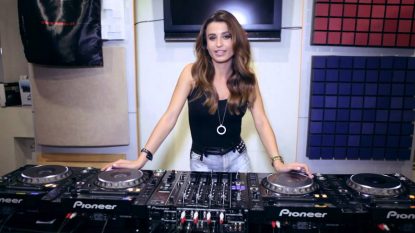 Hopefully the arguments for and against them explained above will give you a better idea of whether DJing without headphones is right for you. Clearly technology has moved on since the days of spinning vinyl records, allowing for ever more creative music production while you DJ.
Hopefully the arguments for and against them explained above will give you a better idea of whether DJing without headphones is right for you. Clearly technology has moved on since the days of spinning vinyl records, allowing for ever more creative music production while you DJ.
The need for headphones has diminished and world famous DJs are now proving it’s very possible, in fact beneficial not to use headphones.
So is it better for you?
Well there’s only one way to find out and thats experiment. Make use of all the visual tools available to you, use the sync if you want to and see if you can create a perfectly mixed DJ set from a curated playlist and see how it worked for you.
Personally I love the extra clarity that DJ headphones provide, not to mention the confidence boost from knowing exactly how it’s going to sound. But I can easily see a day when I forgo the need for headphones and enjoy mixing without them. It may be entirely possible that from that day I never look back.
Plan your set well. Understand the sounds in your songs, rehearse over and over, build up your confidence without the headphones and you’ll soon see that DJing with headphones is possible.
What to read next…
Check out these great DJ articles to help you further.
